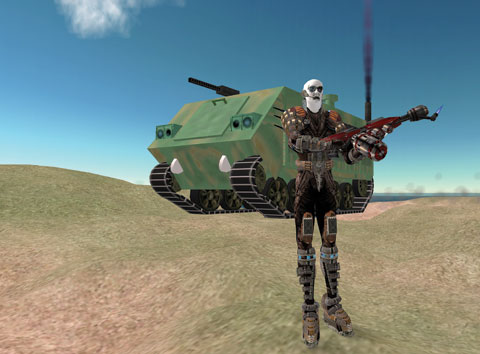The perils of a digital life
Ooit gehoord van Second Life? Het is een simulatie van de echte wereld (real life) met bewoners die elkaar ontmoeten, aan die wereld bouwen en met deels vergelijkbare regels als in het echte leven. Je kunt er winkelen, uitgaan, studeren, rondcrossen, vrienden maken. Je kunt rondvliegen boven een terrein om je te oriënteren en je kunt je laten teleporteren naar andere locaties.
Maar zelfs het Second Life is niet zonder gevaren.
I’ve written about potential inhibitors to consciousness uploading in the past, but I believe I’ve come up with another possible problem for those wishing to live a purely digital life.
It may very well turn out that, as a medium, digital substrate is far too insecure and algorithmically unconstrained. This could eventually lead to intractable complexity. Put another way, a digital existence may be too open-ended and diverse for there to be any kind of stability.
Virtual reality environments and MMORPGs are giving us the first clue that this may be a problem. Take Second Life, for example, which is already experiencing a number of strange anomalies and issues. In the past year SL users have had to deal with CopyBot, CampBots, SheepBots, grey goo, and alt instances.
Each of these are headaches unto themselves, and possible harbingers of more severe problems to come.
Virtual nuisances
CopyBot was originally created as a debugging tool by the SL development team and was intended for functions like import/export and backing up data. But as is so often the case with technology, it was twisted and used for an entirely different purpose altogether. Some opportunistic Second Lifers used CopyBot to duplicate items that were marked no copy by the creator or owner, thus violating intellectual property rights. To date, attempts to counter CopyBot have included anti-CopyBot spamming defeaters, which have in turn given rise to anti-anti-CopyBot defeaters. Call it an algorithmic arms race.
While this hints at post-scarcity and open source, it is still unclear how unbridled duplication will offer users the incentive to create original artifacts for the SL environment.
CampBots and SheepBots aren’t nearly as contentious, but are equally annoying. These are essentially SpamBots working under the guise of an avatar.
And back in October of 2006 users experienced a grey goo scare when a “griefer” (a person who disrupts video-games) attacked Second Life with self-replicating “grey goo” that melted down the SL servers. The griefers used malign scripts that caused objects to spontaneously self-replicate. According to the the transcript of the SL blogs:
Lees verder in: IEET

Build your own weapons in the Combat Sandbox ......
Alsof er niet genoeg ellende is in het First Live 